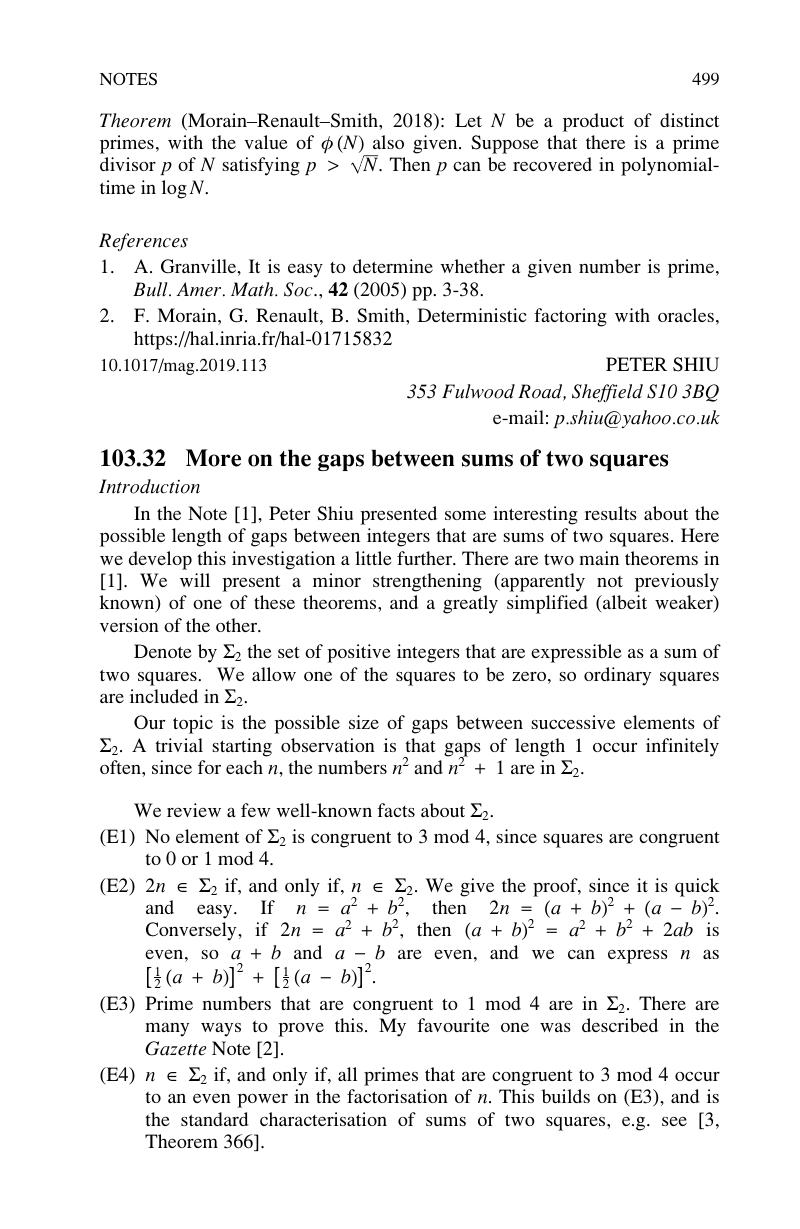No CrossRef data available.
Article contents
103.32 More on the gaps between sums of two squares
Published online by Cambridge University Press: 21 October 2019
Abstract
An abstract is not available for this content so a preview has been provided. Please use the Get access link above for information on how to access this content.

Information
- Type
- Notes
- Information
- Copyright
- © Mathematical Association 2019
References
Shiu, P., The gaps between sums of two squares, Math. Gaz. 97 (2013) pp. 256–262.10.1017/S0025557200005842CrossRefGoogle Scholar
Jameson, G. J. O., Two squares and four squares: the simplest proof of all? Math. Gaz. 94 (2010) pp. 119–123.CrossRefGoogle Scholar
Hardy, G. H. and Wright, E. M., An introduction to the theory of numbers, Oxford Univ. Press (1979).Google Scholar
Richards, I., On the gaps between numbers which are the sums of two squares, Advances in Math. 46 (1982) pp. 1–2.CrossRefGoogle Scholar
Bambah, R. P. and Chowla, S., On numbers which can be expressed as the sum of two squares, Proc. Nat. Inst. Sci. India 13 (1947) pp. 101–103.Google Scholar
Uchiyama, S., On the distribution of integers representable as a sum of two squares, J. Faculty Sci. Hokkaido Univ. 18 (1965) pp. 124–127.10.14492/hokmj/1530691483CrossRefGoogle Scholar

